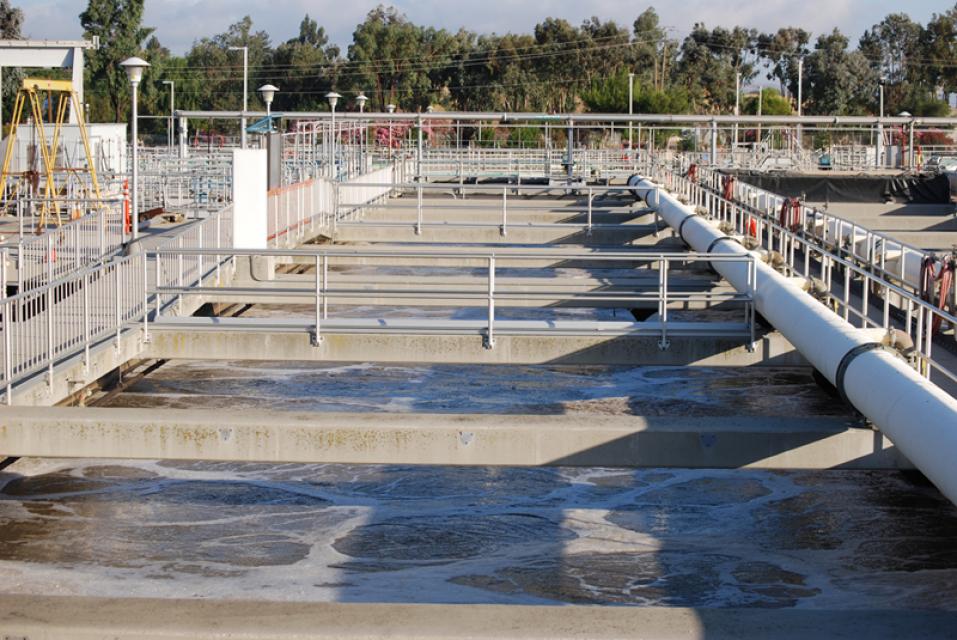Cost-Effective and Green Wastewater Treatment Services Near You
Cost-Effective and Green Wastewater Treatment Services Near You
Blog Article
Recognizing Wastewater Treatment Processes and Their Environmental Effect
The ins and outs of wastewater therapy procedures play a pivotal role in mitigating environmental difficulties linked with water contamination. Each phase, from preliminary to innovative treatments, is developed to attend to particular impurities, inevitably guarding both public health and wellness and marine communities. In spite of technical developments in therapy efficiency, significant obstacles continue, consisting of the management of residual toxins and the implications of nutrient runoff. As we explore the intricacies of these processes, it ends up being vital to question just how far current approaches can develop to meet the expanding demands of sustainability and ecological preservation.
Introduction of Wastewater Treatment
How is wastewater transformed into a risk-free resource for the setting? Wastewater therapy is a crucial process created to get rid of impurities from made use of water, thereby guarding public health and wellness and shielding communities. This process starts with the collection of wastewater from property, industrial, and commercial sources, which is then guided to treatment centers.
At these facilities, different physical, chemical, and organic methods are utilized to treat the wastewater. Consequently, organic treatments, such as triggered sludge processes, utilize microorganisms to break down organic matter.
The treated effluent can be securely discharged into natural water bodies or reused for watering and industrial purposes, promoting resource preservation. Additionally, the treatment procedure produces biosolids, which can be repurposed as fertilizers or dirt changes, better improving sustainability.
Phases of Therapy Processes
The wastewater treatment procedure normally includes 3 key phases: initial, main, and second treatment. Each stage serves a distinct duty in reducing the pollutant load and making certain the effluent fulfills ecological requirements before discharge.

The primary treatment phase focuses on the physical separation of put on hold solids from the wastewater. Via sedimentation, heavier particles resolve at the end of sedimentation tanks, forming sludge, while lighter products, such as oils and oils, float to the surface and are skimmed. This process considerably minimizes the organic and inorganic tons in the wastewater.
Additional therapy is an organic process aimed at further lowering the focus of organic issue. This stage is important for achieving the required biochemical oxygen need (BODY) reduction, eventually leading to cleaner effluent all set for discharge or further treatment.
Advanced Therapy Technologies
Complying with the additional therapy processes, progressed therapy innovations play a crucial duty in additional improving the top quality of dealt with wastewater. These modern technologies are made to eliminate residual contaminants that are not successfully gotten rid of throughout main and additional treatments, making certain the effluent meets rigid regulatory criteria.
Amongst the widely used sophisticated therapy techniques are membrane layer filtering, reverse osmosis, and progressed oxidation processes. Membrane filtration, consisting of microfiltration and ultrafiltration, works in separating fine bits, pathogens, and colloids from the water (Wastewater). Reverse osmosis makes use of semi-permeable membrane layers to eliminate dissolved solids, causing premium water ideal for various applications
Advanced oxidation processes (AOPs) utilize solid oxidants to deteriorate organic contaminants, including pharmaceuticals and individual treatment items that are immune to conventional treatment. These techniques improve the biodegradability of intricate substances, promoting their elimination.
An additional significant innovation is the usage of organic nutrient elimination procedures, which specifically target nitrogen and phosphorus, avoiding eutrophication in getting water bodies. In general, sophisticated treatment innovations Continue are important for accomplishing higher levels of purification, promoting water reuse, and safeguarding visit this page public health while addressing the challenges related to wastewater monitoring.
Ecological Benefits of Treatment
Numerous environmental advantages emerge from reliable wastewater therapy processes that contribute to ecosystem health and sustainability. Primarily, these processes considerably reduce the launch of unsafe toxins into natural water bodies, which helps keep water environments. By eliminating pollutants such as hefty steels, nutrients, and pathogens, treated wastewater alleviates the danger of waterborne conditions and advertises biodiversity in aquatic atmospheres.
Additionally, wastewater treatment centers commonly utilize advanced modern technologies that allow water recycling and reuse. This practice not just conserves freshwater resources but additionally minimizes the demand on all-natural water materials. Boosted nutrient removal from wastewater can also stop eutrophication, a process that results in algal blooms and succeeding oxygen depletion in marine systems.
Furthermore, reliable treatment procedures can reduce greenhouse gas exhausts, especially methane and nitrous oxide, which are usually released throughout neglected wastewater disintegration. By capturing and using biogas from anaerobic digesters, centers can convert waste right into renewable energy, consequently contributing to a reduction in nonrenewable fuel source dependency.
Difficulties and Future Fads
While the environmental advantages of wastewater therapy are clear, several difficulties persist that impede optimum end results in this field. One major problem is maturing infrastructure, which typically leads to inefficiencies and increased operational expenses - Wastewater. Numerous therapy plants were developed decades earlier, and their capacities do not straighten with modern-day needs, that include more stringent regulative criteria and greater quantities of wastewater due to urbanization
Looking in advance, there is an expanding emphasis on source recuperation and circular economic climate principles within wastewater therapy. Technologies such as anaerobic food digestion, which can create biogas, and advanced purification innovations are acquiring grip. These techniques not only boost treatment efficiency yet additionally promote sustainability.
Ultimately, attending to these obstacles calls for partnership amongst stakeholders, financial investment in technology, and a dedication to continuous research. try this site By accepting these trends, the wastewater therapy industry can advance to meet the needs of a changing setting and society.
Verdict
In verdict, wastewater therapy procedures play an essential role in enhancing environmental high quality and public wellness. The multi-stage therapy structure, paired with advanced technologies, efficiently alleviates pollution and promotes sustainable water administration.
Report this page